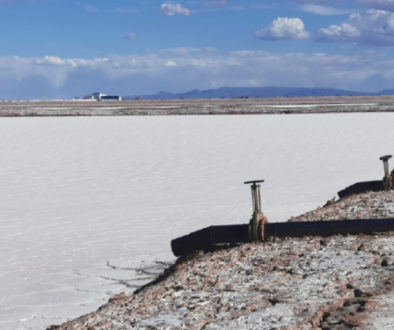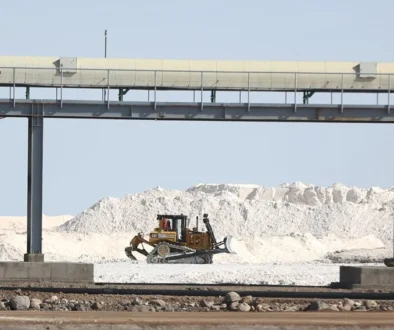Bolivia Climate Change Monthly: July, 2013
Welcome to the July 2013 edition of Bolivia Climate Change Monthly where you will find the latest research, policy, donor activity, and news related to climate change in Bolivia*.
![]()
A Measurement of the Carbon Sequestration Potential of Guadua Angustifolia in the Carrasco National Park, Bolivia by Ricardo A. Rojas Quiroga, Tracey Li, Gonzalo Lora, and Lykke E. Andersen published by the Institute for Advanced Development Studies (INESAD).
Abstract: The carbon sequestration potential of an unmanaged and previously unstudied Guadua angustifolia bamboo forest in the Carrasco National Park of Bolivia has been studied, by estimating the total aboveground biomass contained in the forest. It was found that the aboveground biomass consisting of stems, branches, and foliage, contains a total of 200 tons per hectare, leading to an estimated 100 tons of carbon being stored per hectare aboveground, which is comparable to some species of tree such as the Chinese Fir; this bamboo species therefore has the potential to play a significant role in the mitigation of climate change. The relation between the biomass, M, of each component (stems, branches, and foliage) and the diameter, d, of the plant was also studied, by fitting allometric equations of the form M = αdβ. It was found that all components fit this power law relation very well (R2 > 0.7), particularly the stems (R2 > 0.8) and branches (R2 > 0.9) for which the relation is found to be almost linear.
Climatic control on eastern Andean denudation rates (Central Cordillera from Ecuador to Bolivia) by E. Pepin, J.L. Guyot, E. Armijos, H. Bazan, P. Fraizy, J.S. Moquet, L. Noriega, W. Lavado, R. Pombosa, and P. Vauchel published in Journal of South American Earth Sciences.
Abstract. The suspended sediment yield and associated current denudation rates of eight large catchments located along the eastern range of the central Andes have been determined. The catchments have been chosen as mountainous and mainly denudational basins to avoid sediment sinks that could bias our analysis. Discharge data and suspended sediment concentrations measured at each catchment outlet have been combined to produce average annual sediment fluxes and thus yields and current denudation rates over time spans of 2–43 years. Denudation rates range between 0.25 and 1.20 mm yr−1 with a north to south gradient. Maximum values are observed in Bolivian catchments. A correlation analysis has been carried out to determine the main controlling factors of current denudation rates at the catchments spatial scale. Climatic, topographic and lithologic parameters have been studied. Our results suggest that denudation rate is mainly controlled by the climate and especially its variability. A strong negative correlation between mean average runoff and denudation rate is detectable whereas topography and lithology are playing no significant role. A multiple regression analysis is suggesting that large Andean catchment denudation rate could be efficiently estimated by the variability of the climate. Combining both slope and lithologic secondary parameters improves the estimation. Finally, the important effect of climate variability on erosion and sediment transport seems to be enhanced by the potential protection of the vegetation cover that is directly controlled by the climate regime.
From large to small: Reorienting rural development policies in response to climate change, food security and poverty** by Benno Pokorny, Wil de Jong, Javier Godar, Pablo Pacheco, and James Johnson published in Forest Policy and Economics, Special Issue: Forest and conservation policy in a changing climate.
Abstract: Discourses regarding the development of the Amazon region highlight the importance of the local cultures, local knowledge and participation of smallholders, such as indigenous people, traditional communities and small-scale colonists. Current policies, however, still pursue a development model that is oriented towards global commodity markets and the capacity of well-qualified entrepreneurs with the capital required for large-scale investments, despite a growing consensus on its ecological incompatibilities, social limitations and economic risks. Decision makers from both governmental and non-governmental organisations widely disregard the possibility that smallholders could more actively contribute to rural development. Instead, the production practices of smallholders and their modes of social organisation are perceived as obsolete and inefficient. By presenting examples from the region, this paper argues that smallholders have the potential to manage production systems that maintain environmental stability while effectively contributing to local well-being. Therefore, the paper advocates to more effectively using local capacities for the development of rural Amazon through the promotion of small-scale production systems.
Good Living for Whom? Bolivia’s Climate Justice Movement and the Limitations of Indigenous Cosmovisions by Nicole Fabricant published in the journal Latin American and Caribbean Ethnic Studies Special Issue: The Politics of Indigeneity in Bolivia.
Abstract: Climate change has become an important issue in Bolivia as communities across the lowlands and highlands are beginning to feel the direct effects of the ecological crisis. While Evo Morales, the current president of Bolivia, has surfaced as an international superstar for the climate justice movement, behind his public appearances at UN climate conferences are indigenous organizations and social movements who work daily to map out strategies for adaptation and mitigation. This paper analyzes how indigenous climate justice activists in Bolivia mobilize a particular vision of Andean indigeneity, frozen in time and space, to make specific political claims about their rights in relationship to the environment and propose alternative economic structures. Many activists argue that the ecological problems of this century are a direct result of advanced capitalism, which has turned lands, forests, and natural surrounds into commodities. However, their timeless vision of indigeneity, particularly using the imagined ayllu or pre-Columbian land-holding patterns as solutions to climate crisis, poses dangers for the millions of Bolivians who live and work in urban centers.
Parana River Morphodynamics in the Context of Climate Change by Massimo Guerrero, Michael Nones, Ramiro Saurral,Natalia Montroull, and Ricardo N. Szupiany published in the International Journal of River Basin Management.
Abstract: This paper presents an analysis of the sediment dynamics that takes place at different scales within the Middle and the Lower Parana River in the La Plata Basin. The aim of this study is to provide a multi-disciplinary and multi-scale approach for the prediction of river future morphology in the context of climate change, the intended use of which is the prognosis of river morphodynamics long-term impact on manmade structures and activities over or near the river. The study is based on three levels of mathematical modelling, with the output of wider-scale models providing the input conditions for more specific ones. Climate models give the input ensemble, i.e., future precipitation and temperature over La Plata Basin. The semi-distributed macroscale VIC hydrological model simulates the flow discharge time series that are applied to an own-developed 1-D morphodynamic model. The 1-D model simulates future rate of sediment transport and corresponding bed level changes at watershed scale and provides the boundary conditions for a 2-D model. Therefore, streamflow divagations at channel scale are simulated by means of the MIKE21C code developed by the Danish Hydraulic Institute.
The analysis indicates a rather low sensitivity of the Parana River bed profile, i.e., 1-D morphology, to the increase predicted in flow discharge, whereas the streamflow appreciably divagates. In particular, surpassing an upper bound in the most frequent discharge appears effective in driving the actual bifurcated morphology into a meandering-multithread configuration.
Strategic Land Use Planning for Climate Change-Driven Water Shortages in El Alto, Bolivia (Working Paper) by Linda Shi, Marisa Escobar, Brian Joyce, and James Kostaras published by Lincoln Institute of Land Policy.
Abstract: The highland city of El Alto, Bolivia, is vulnerable to climate change due to the region’s declining water resources and its socio-economic, fiscal and governance constraints. El Alto could double in expanse by 2050 if past development patterns continue. National and international agencies are augmenting the water supply infrastructure, but the city and water utility’s financial vulnerability in extending the distribution network is not being addressed. Peri-urban residents, including migrants displaced by rural drought, and urban residents solely reliant on piped water will be at risk to water shortages, water contamination and price spikes. While the link between drought and urban land use planning is not well studied, this case suggests that urban growth management should play a strong role in climate adaptation in arid zones. Besides supply-side infrastructure, adaptation efforts in the water sector should build El Alto’s institutional capacity to manage urban growth and promote community drought resilience.
![]()
IFAD reports on progress in its Bolivia ASAP programing.
In its second newsletter, International Fund for Agricultural Development (IFAD)’s Adaptation for Smallholder Agriculture Program (ASAP) provides its multi-country programing update. Bolivia is one of 12 new investments in advanced stages of design that are together worth US$ 120 million. Technical foci include climate information management, community-based natural resource management, and an inventory of indigenous adaptation knowledge. The newsletter also includes a more detailed ‘In Focus’ report on IFAD’s work on integrating knowledge management into project design through its $2 million Programa de Inclusión Económica para Familias y Comunidades Rurales en Territorios del Altiplano, Tierras Bajas y Valles Inter- Andinos (ACCESOS) Bolivia program. The newsletter also includes a video entitled “Climate change in the words of the Bolivian rural communities.”
Japan funds projects to evaluate effects of climate change on Bolivia’s Glaciers.
A July 3 article (in Spanish) on Eldeber discusses a new project funded by the Japan International Cooperation Agency (JICA) and implemented by teams from the The Institute of Hydraulics and Hydrology (IHH) of the Universidad Mayor de San Andrés (UMSA) in Bolivia and the Tohoku University of Japan. The team will investigate climate change impacts on glaciers of the Tuni Condoriri and Huayna Potosi mountains that provide much of the water of the cities of La Paz and El Alto. Three researchers took to the mountains this month to collect the necessary data that they hope will be used for policy making purposes.
SDC announces new projects in Bolivia.
In its 11th Newsletter of the Climate Change & Environment Network, the Swiss Agency for Development and Cooperation (SDC) has announced a new project to strengthen climate change research in Bolivia by supporting universities in La Paz and Cochabamba. The project will last from 2013 until 2017. An additional SDC initiative launched in May 2013 is working with the most marginalized urban communities in Bolivia to “promoting sustainable and replicable municipal environmental management models which also contribute to climate change mitigation”.
UNEP works with Paraguay and Bolivia to evaluate “vulnerability and impact of climate change in the Gran Chaco.”
A July 22 Blue Channel 24 article discusses a new project funded by the United Nations Environment Program (UNEP) and implemented by the University of Cordillera (Universidad de la Cordillera Fundacion) in Bolivia and the Development Institute (Instituto Desarrollo) in Paraguay. The initiative aims to form a Knowledge Centre that develops research on the impacts of and best adaptation to climate change in the region. A project workshop for actors across the local government, private sector and social organizations, was held at the Instituto Desarrollo on July 31.
![]()
Lidema ejecuta 15 proyectos de adaptación al cambio climático, La Patria, July 28, 2013.
Adoptan plan boliviano sobre cambio climático, Pagina Siete, July 11, 2013.
Bolivia’s indigenous people join fight to save Gran Chaco wilderness, The Guardian, July 8, 2013.
Climate Change’s Impacts on Lake Poopó, Bolivia: Reduced Area and Biodiversity, EOSnap, July 1, 2013.
![]()
Bolivian Government Holds Workshop on Climate Change in the Agricultural Sector, Ministerio de Desarrollo Rural y Tierras, July 30, 2013.
Reunión de Coordinaciones del Grupo de Trabajo Cambio Climático y Justicia, GTCCJ, July 12, 2013.
El movimiento indígena es absorbido por el modelo extractivista (Plataforma Boliviana Frente al Cambio Climático), Centro de Documentacion y Informacion Bolivia (CEDIB), July 3, 2013.
En: http://inesad.edu.bo/developmentroast/2013/08/bolivia-climate-change-monthly-july-2013/


